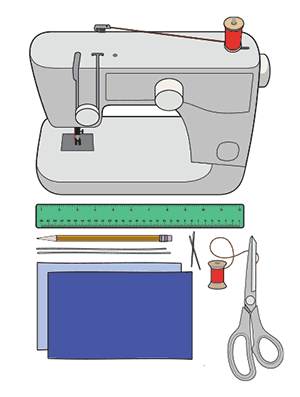Slow the spread: Mask up to defend the Delta variant
- Category: New Orleans, News, Community, COVID-19, Health & Wellness
- Posted on:

NEW ORLEANS -- Don't toss those masks just yet! Mayor Cantrell has issued an indoor mask advisory for Orleans Parish. Get the details here.
The good news is that wearing cloth face coverings in public settings and when around people who don’t live in your household, especially where other social distancing measures are difficult to maintain, is effective in helping to slow the spread of COVID-19.
The use of simple cloth face coverings can help people who may have the virus and don't know it from transmitting it to others.
Cloth face coverings provide a simple barrier to help prevent respiratory droplets from traveling into the air and onto other people when the person wearing the cloth face-covering coughs, sneezes, talks, or raises their voice. This is called source control.
This recommendation is based on what we know about the role respiratory droplets play in the spread of the virus that causes COVID-19, paired with emerging evidence from clinical and laboratory studies that shows cloth face coverings reduce the spray of droplets when worn over the nose and mouth.
COVID-19 spreads mainly among people who are in close contact with one another (within about 6 feet), so the use of cloth face coverings is particularly important in settings where people are close to each other or where social distancing is difficult to maintain.
Who should wear a cloth face covering?
Cloth face coverings should not be placed on:
- young children under age 2
- anyone who has trouble breathing
- anyone unable to remove the mask without assistance
These cloth face coverings recommended by CDC are not surgical masks or N-95 respirators. Those are critical supplies that must continue to be reserved for healthcare workers and other medical first responders.
When to wear a mask:
- If you are taking care of a person with the suspected COVID-19 infection
- If you are coughing or sneezing
- In public settings where social distancing measures are difficult to maintain, for example in the grocery store or pharmacy
Best practices for wearing a mask:
Masks are effective only when used in combination with frequent hand-cleaning with alcohol-based hand rub or soap and water. If you wear a mask, then you must know how to use it and dispose of it properly.
RELATED: Why handwashing really is effective in stopping the spread of coronavirus
- Before putting on a mask, clean your hands with an alcohol-based hand rub or soap and water
- Cover mouth and nose with mask and make sure there are no gaps between your face and the mask
- Avoid touching the mask while using it; if you do, clean your hands with an alcohol-based hand rub or soap and water
- Replace the mask with a new one as soon as it is damp and do not re-use single-use masks
- To remove the mask: remove it from behind (do not touch the front of mask); discard immediately in a closed bin; clean hands with alcohol-based hand rub or soap and water
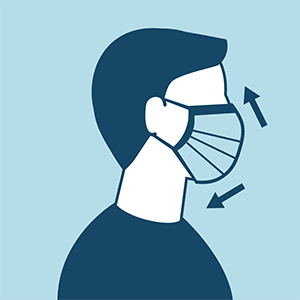
Cloth face coverings should:
- fit snugly but comfortably against the side of the face
- be secured with ties or ear loops
- include multiple layers of fabric
- allow for breathing without restriction
- be able to be laundered and machine dried without damage or change to the shape
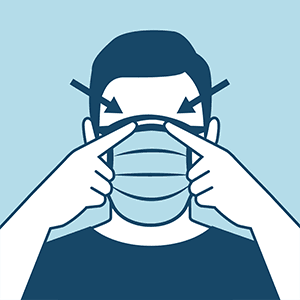
How to make your own mask:
Cloth face coverings fashioned from household items or made at home from common materials at low cost can be used as a mask.
A. Sewn Cloth Face Covering
Materials
- Two 10”x6” rectangles of cotton fabric
- Two 6” pieces of elastic (or rubber bands, string, cloth strips, or hair ties)
- Needle and thread (or bobby pin)
- Scissors
- Sewing machine
Tutorial
1. Cut out two 10-by-6-inch rectangles of cotton fabric. Use tightly woven cotton, such as quilting fabric or cotton sheets. T-shirt fabric will work in a pinch. Stack the two rectangles; you will sew the mask as if it was a single piece of fabric.
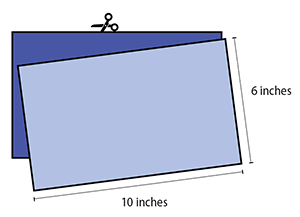
2. Fold over the long sides ¼ inch and hem. Then fold the double layer of fabric over ½ inch along the short sides and stitch down.
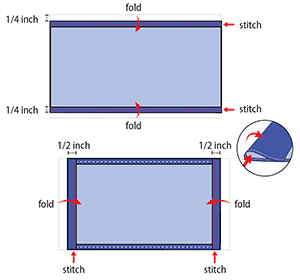
3. Run a 6-inch length of 1/8-inch wide elastic through the wider hem on each side of the mask. These will be the ear loops. Use a large needle or a bobby pin to thread it through. Tie the ends tight.
Don’t have elastic? Use hair ties or elastic headbands. If you only have string, you can make the ties longer and tie the mask behind your head.
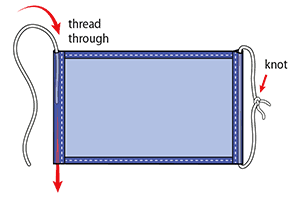
4. Gently pull on the elastic so that the knots are tucked inside the hem. Gather the sides of the mask on the elastic and adjust so the mask fits your face. Then securely stitch the elastic in place to keep it from slipping.
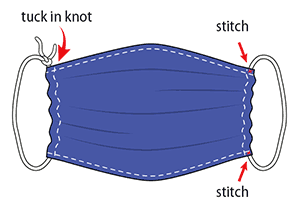
B. Quick Cut T-shirt Face Covering (no-sew method)
Materials
- T-shirt
- Scissors
Tutorial
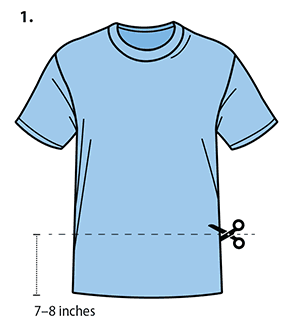
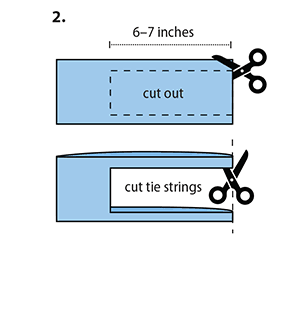
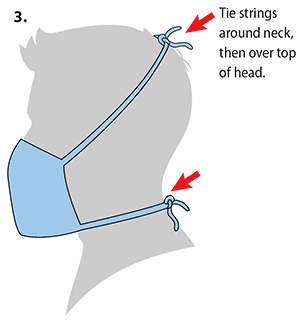
C. Bandana Face Covering (no-sew method)
Materials
- Bandana (or square cotton cloth approximately 20”x20”)
- Coffee filter
- Rubber bands (or hair ties)
- Scissors (if you are cutting your own cloth)
Tutorial
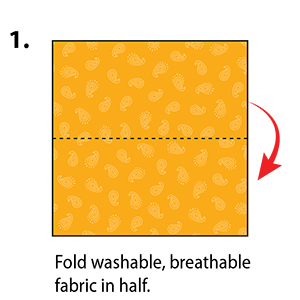
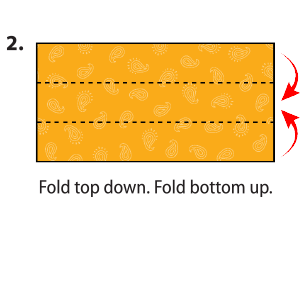
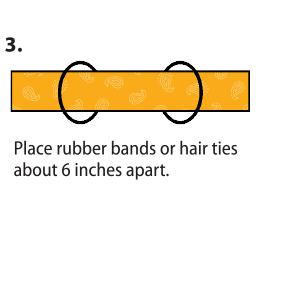
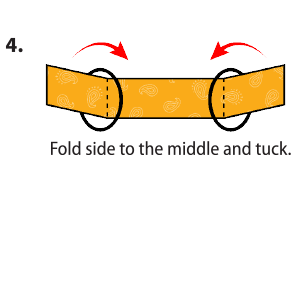
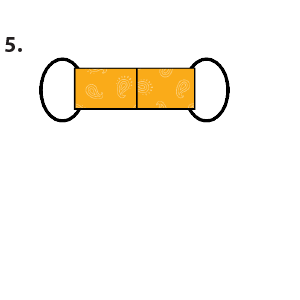
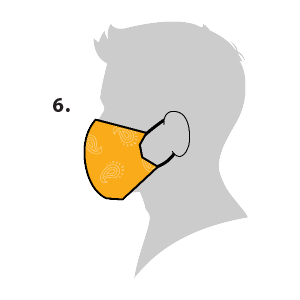
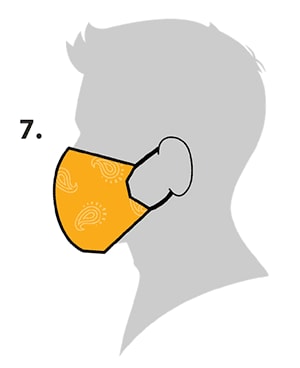
Best practices for cloth face coverings:
Should cloth face coverings be washed or otherwise cleaned regularly? How regularly?
Yes. They should be routinely washed depending on the frequency of use.
How does one safely sterilize/clean a cloth face covering?
A washing machine should suffice in properly washing a face covering.
How does one safely remove a used cloth face covering?
Individuals should be careful not to touch their eyes, nose, and mouth when removing their face covering and wash hands immediately after removing.
Additional resources:
- Facts about coronavirus: Know how it spreads
- Preparing your home for COVID-19: What, when, and how to clean
- The most effective ways to kill coronavirus in your home
Content Source: https://www.cdc.gov/ncird/index.html
